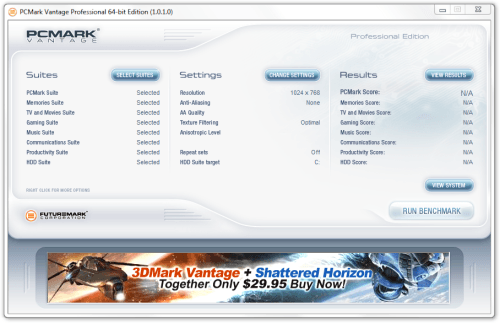- Qualcomm Launches Snapdragon 4 Gen 2 Mobile Platform
- AMD Launches Ryzen PRO 7000 Series Mobile & Desktop Platform
- Intel Launches Sleek Single-Slot Arc Pro A60 Workstation Graphics Card
- NVIDIA Announces Latest Ada Lovelace Additions: GeForce RTX 4060 Ti & RTX 4060
- Maxon Redshift With AMD Radeon GPU Rendering Support Now Available
Western Digital SiliconEdge Blue 256GB
The SSD market is littered with competitors, but up to now, few companies behind mechanical storage have entered the arena. Last month though, Western Digital scratched its name off the list, with the help of its SiliconEdge Blue models. We’re taking a look at the 256GB variant here, so let’s see how it fares against the competition!
Page 3 – Synthetic: PCMark Vantage
There are few PC enthusiasts who are unfamiliar with the name “Futuremark”, as the Finland-based developer has been producing quality benchmarks to help us gauge our computer’s worth for years. Originally known as Madonion, Futuremark has expanded its focus to go beyond its bread and butter, graphics and gaming, and tackle other areas, such as full system performance. That’s where PCMark comes into play.
The company’s most recent addition to the PCMark family is Vantage. For most users, a full suite would be run, but because we’re focused on storage performance only, we instead run only the storage-specific tests. Fortunately, Futuremark makes this easy for us to do as it has split up the entire suite into seven separate sub-tests, one being the aptly named “HDD Suite”.
PCMark’s HDD Suite may look simple on the surface, but it’s actually quite exhaustive. While the benchmark does deliver a simple “overall” result, it actually tests I/O performance based on a variety of scenarios, from adding music to Windows Media Player, to loading applications in succession, to editing video, to running a malware scanner, and more. It even includes metrics to evaluate a simulated Windows Vista boot time, so Futuremark has done a fine job of combining many useful scenarios into a single button press.
![]()
![]()
![]()
![]()
![]()
![]()
![]()
![]()
![]()
![]()
The SiliconEdge Blue has no trouble slotting in near the top of the PCMark Vantage scores, and performs equally well in the HDD Suite’s overall score. The Windows Media Center test seems to be where the SiliconEdge Blue digs in to score points, but doesn’t perform as well in the Windows Vista startup test or in the Windows Defender random access scenario.
Of course we can’t forget about the lonely hard disk drive in these charts. One can’t gauge (gage?) how far one has progressed without a clear point of reference and the Seagate Barracuda serves as a good one. It is hard to see just how good SSDs are until you place them side-by-side with a typical desktop drive, and then the differences suddenly became at times absurd. There just isn’t any other kind of easy, widely available upgrade for the PC today that can give these sorts of performance gains in everyday tasks.
The performance differences between SSDs may seem significant in these charts, but the typical person would be hard pressed to differentiate which SSD was which when placed in their system. The only drive that would stick out like a sore thumb during use would be the HDD.
Support our efforts! With ad revenue at an all-time low for written websites, we're relying more than ever on reader support to help us continue putting so much effort into this type of content. You can support us by becoming a Patron, or by using our Amazon shopping affiliate links listed through our articles. Thanks for your support!





